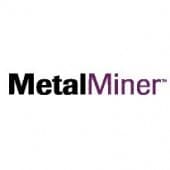Almost ignored by those outside of the industry, the London Metal Exchange has two contracts that are still of immense potential value to the aluminum industry, or at least they should be when you consider the vast scale of the aluminum die-casting industry worldwide.
The LME has two contracts in addition to primary metal, the aluminum alloy contract which is defined as aluminum alloy conforming to A380.1, 226 or AD12.1 and the aluminum The North American Special Alloy Aluminum Contract which is defined as aluminum alloy conforming to the LME NA380.1 specification (an LME modification of The Aluminium Association Inc. A380.1 specification (1989)) and is designed very much for the automotive industry.
The North American Special Alloy Aluminum Contract (NASAAC) was introduced onto the LME in 2002, in the aftermath of the 2008 financial crisis unwanted metal was dumped on the LME in the same manner as the primary market and inventory surged to almost a quarter of a million tons. But since then inventory has fallen such that now there is a miserly 56,660 metric tons of metal on warrant, not cancelled for removal.
The NASAAC contract suffered in much the same way as the primary price with a dramatic divergence between the LME price and the delivered price. In frustration, the North American Die-Casting Association (NADCA), representing the manufacturers of specialist alloy products for the automotive market, ended up advising its members to switch contractual price references from the LME to Platts in 2013.
Then, during the course of 2014, the LME price collapsed relative to the Platts quotation and metal even started being delivered back onto the LME as the LME NASAAC price moved higher than Platts’ A380 price. Today, the North American market appears to be largely using the Platts quotation for formulaic pricing, but while this allows re-melters to link scrap prices to A380 ingot prices, it does not allow consumers to hedge in the same way that a reliable and liquid LME NASAAC should allow.
Listen to Platts and they will tell you the world has accepted the Platts quotation as the de facto benchmark and that may indeed be the case, but the LME contract has seen a surge in activity last year up 36% after two consecutive years of falling volume. That may not be trade activity, there was considerable volatility last year and speculators may have seen the illiquid market as an opportunity to make a buck. So, too much should not be read into a rise in turnover by itself, but we would welcome input from secondary smelters willing to say whether they have taken up use of the LME NASAAC contract again or what they would need to see in order for them to start using it again in the future.
The LME NASAAC’s sister contract, the Aluminum Alloy contract, has an even more uncertain future. Since 2012, volumes have been falling and last year dropped a further 47%, according to Reuters. The spreads are $10/ton between buy and sell compared to $1-2 for the NASAAC contract, highlighting the illiquid state of the market.
What the LME intends to do with the contract is unclear but letting it quietly die seems to be the strategy. It co-trades at the same ring times as the NASAAC contract so arguably isn’t taking up valuable ring time but neither metals could be said to be busy with most dealers clearing off for a cup of coffee or a cigarette before the fun starts with the base metals. The NASAAC price is unlikely to flourish while the wider aluminum primary market remains so distorted. If the primary price, as expressed by the LME, can converge with the physically delivered price there should be a future for the NASAAC price in what is a vitally important industrial market. What are consumers opinions on this? We would be delighted to hear from you on, or off, the record.
Which stock should you buy in your very next trade?
AI computing powers are changing the stock market. Investing.com's ProPicks AI includes 6 winning stock portfolios chosen by our advanced AI. In 2024 alone, ProPicks AI identified 2 stocks that surged over 150%, 4 additional stocks that leaped over 30%, and 3 more that climbed over 25%. Which stock will be the next to soar?
Unlock ProPicks AI